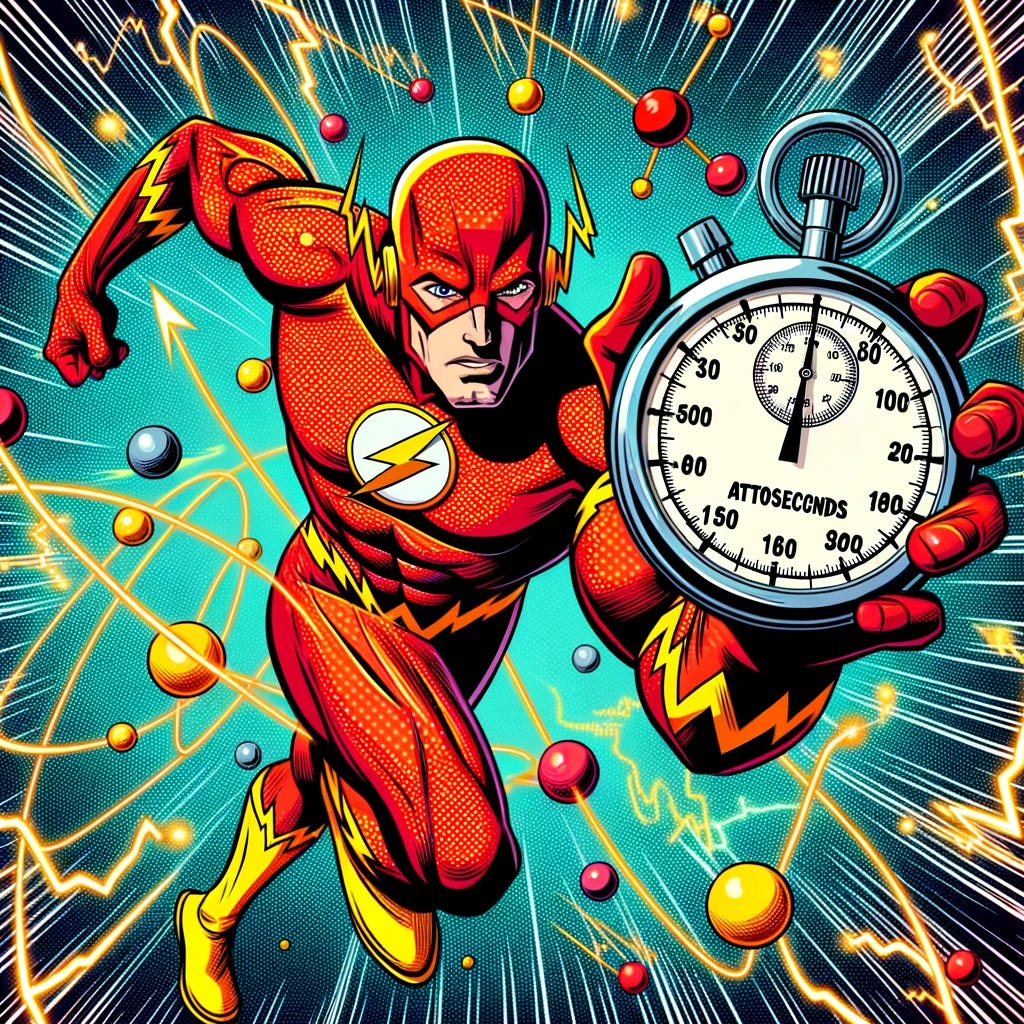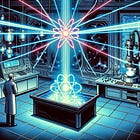Nobel Prize in Physics - 2023
This year, Nobel Prize in Physics recognized a groundbreaking achievement by Pierre Agostini, Ferenc Krausz, and Anne L'Huillier. They developed a technique to observe electron movements and energy shifts within atoms and molecules using incredibly short pulses of light, specifically measured in attoseconds.
Intrigued by this discovery, we decided to delve deeper and present a two-part ELI5 series for students.
Breaking Down Attoseconds
If you start splitting “A Second” you’ll eventually get to Attosecond unit but it takes a lot of time to reach there 🙂
Second: Our daily rhythm's heartbeat.
Millisecond (ms): The blink of an eye.
Microsecond (µs): Light travels 300 meters.
Nanosecond (ns): The speed of modern computers.
Picosecond (ps): Molecular vibrations come alive.
Femtosecond (fs): The stage of chemical reactions.
Attosecond: Here, the dance of electrons around an atom becomes visible.
To truly grasp the brevity of an attosecond, consider these analogies:
The number of seconds elapsed since the big bang are almost as many as there are attoseconds in just 1 Second.
Another way to look at it:
In a single second, light can circle the Earth 7.5 times. Yet, in a fleeting attosecond, light would barely traverse from one end of a molecule to the other.
Take a moment to let that sink in. Read it again slowly.
The Significance of Attoseconds
Previously, our observational capabilities were limited to the femtosecond scale, where we could witness chemical reactions and molecular vibrations. However, the attosecond realm has unveiled the mesmerizing dance of electrons around atomic nuclei.
In 1925, Werner Heisenberg posited that such a world would remain invisible to us. Yet, with the advent of attosecond physics, we're beginning to peer into this once-hidden realm.
Conclusion
The Nobel laureates developed something called “Attosecond pulses”. The goal of this blog post was to help you understand the first part of it. We hope it helped you understand the scale. Next, we’ll try to explain what are Attosecond pulses and how are they generated.







